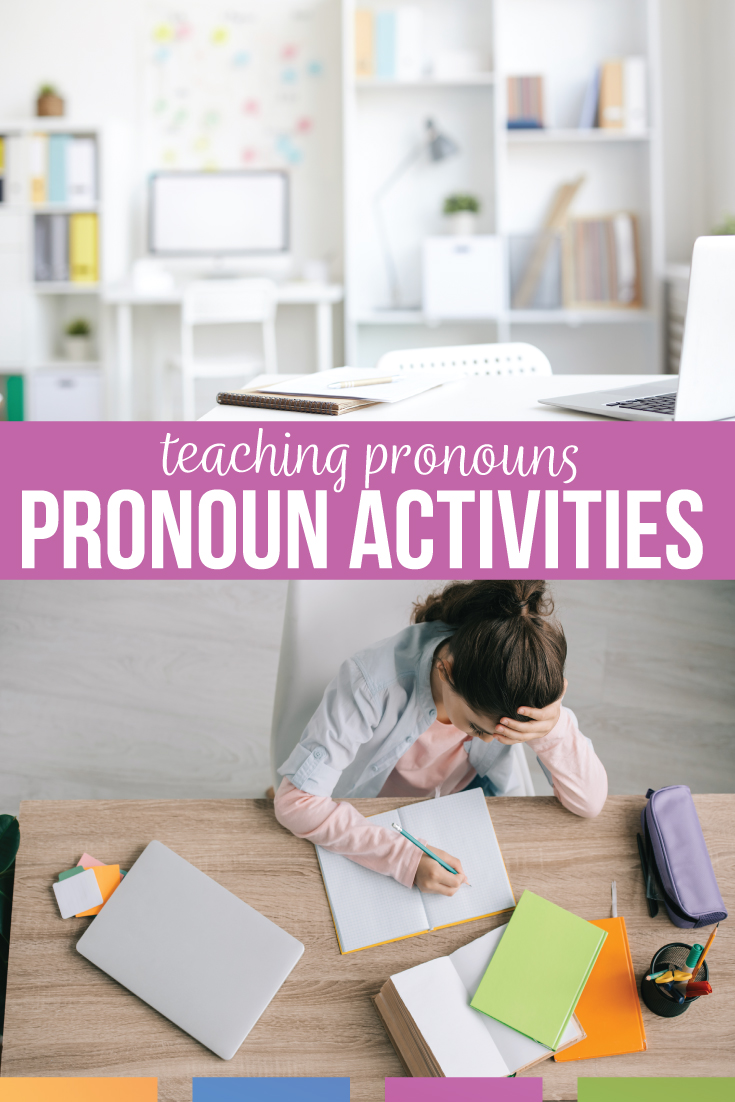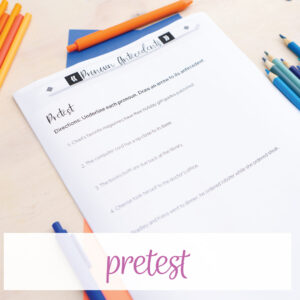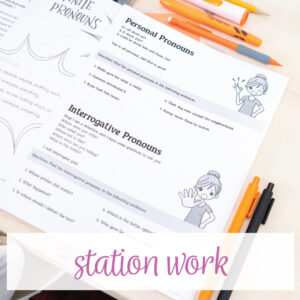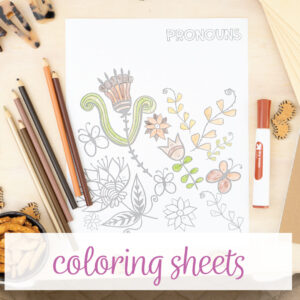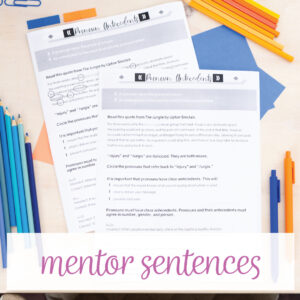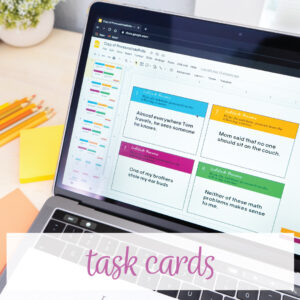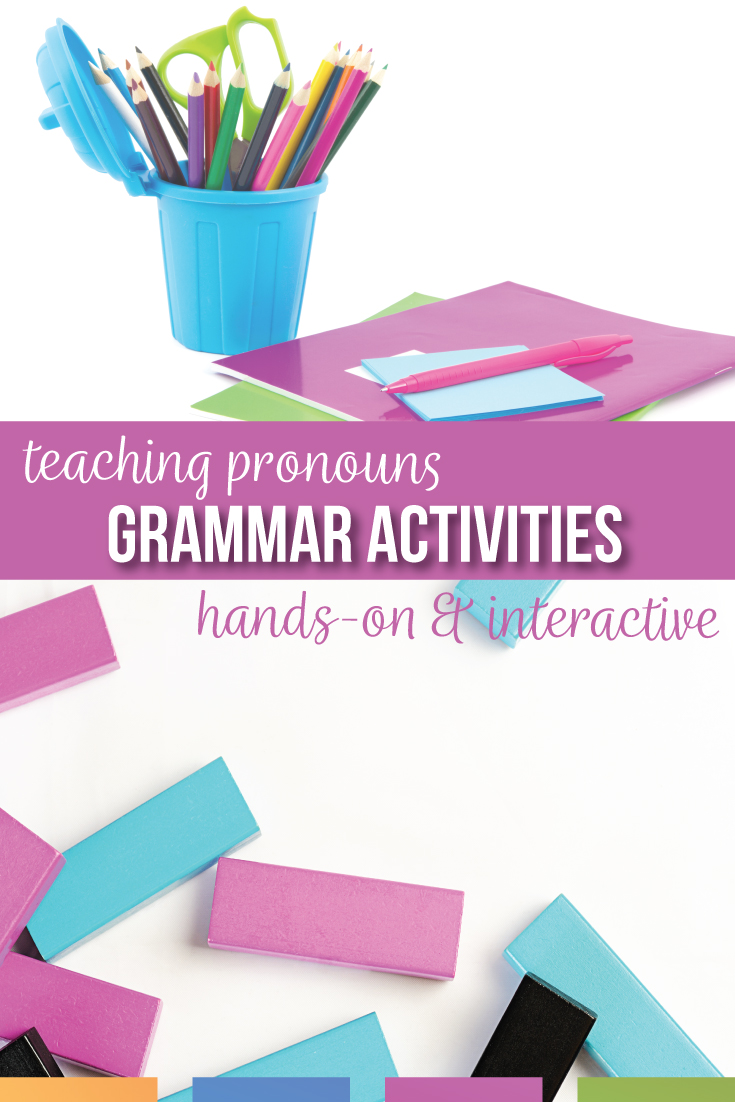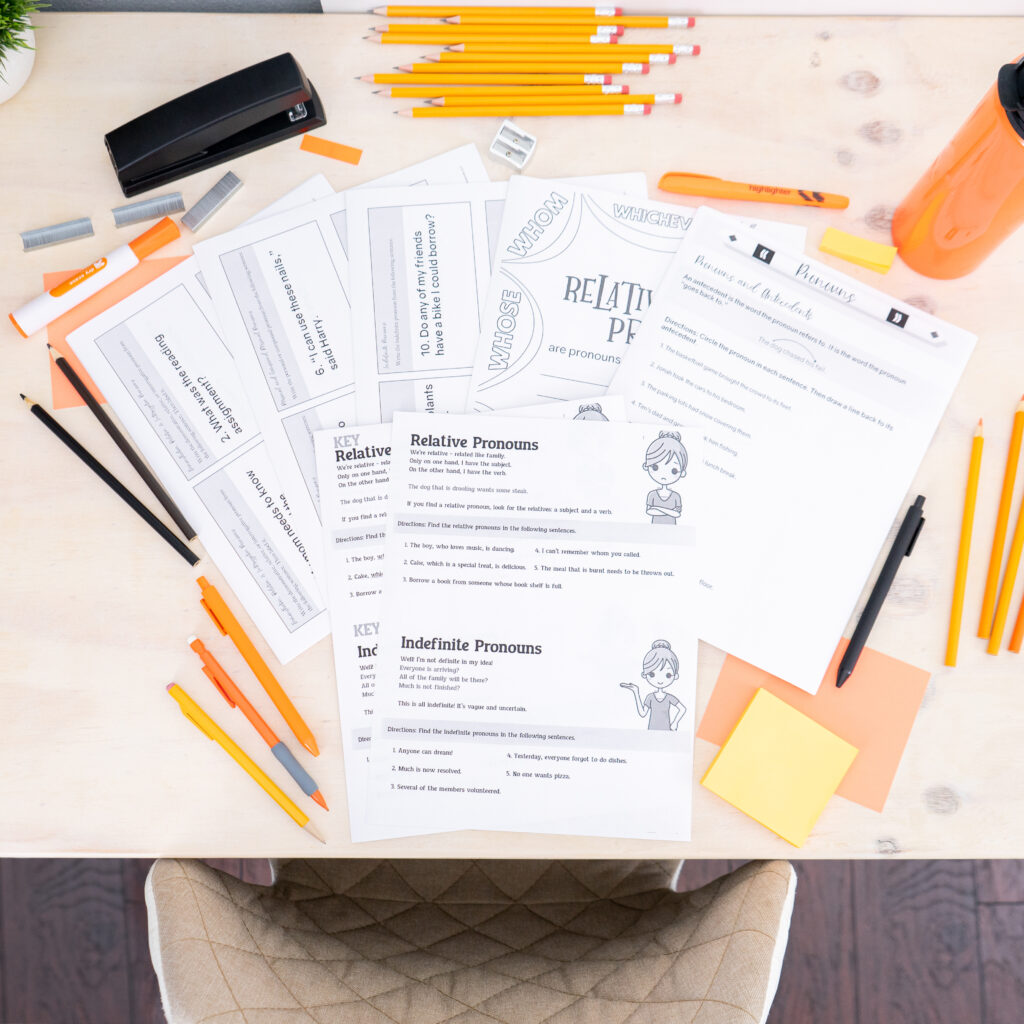Looking for alternatives to pronoun worksheets, a non- pronoun worksheet, fun pronoun activities? I am too. Teaching pronouns is an important foundational part of language lessons.
Pronouns are important in English. Students need to recognize them as subjects, they have to identify pronoun-antecedent problems, and they need to interpret what they read. Sometimes, speakers deliberately use pronouns vaguely to manipulate listeners. Students need to be aware of the proper use of pronouns.
What is the best way to structure a pronoun worksheet?
The best way to structure a pronoun worksheet is to provide clear instructions, examples, and practice exercises that gradually increase in difficulty. Start with identifying pronouns, then move on to replacing nouns with pronouns, and finally incorporate pronoun agreement and usage rules into the exercises.
When do I cover pronoun activities?
I do teach pronouns as part of my eight parts of speech unit; however, pronouns get extra attention. Most language standards have specific requirements for pronoun understanding, and that is because pronouns are often difficult to use properly. I don’t think I am ever done teaching pronouns even as a high school English teacher.
Plus, standards ask learners to understand that the English language evolves and changes. Looking at different types of pronouns helps English grammar teachers meet those standards. For instance, singular pronouns (like singular indefinite) are now widely used with plural pronouns.
Pronouns lead to larger parts of grammar and language study, and I devote a decent amount of time to learning them. Because I don’t want to “grammar drill and kill,” I provide various pronoun activities that keep students engaged and reinforce their understanding.
As a high school English teacher, I cannot stress enough that students must have a firm understanding of pronouns. Most of student writing mistakes deal with pronouns. Either students are writing incredibly ambiguous pronouns, or they have confusing antecedents. Here are some common pronoun errors I see with older students:
- Everyone enjoys ice cream. (“Everyone” is a singular indefinite pronoun. Who is “everyone”? The vague pronoun leads to the assumption that everyone likes ice cream which simply isn’t true.)
- Chuck has practice. Bill has band. He went home. (Who?)
Pronoun errors are some of the most common ones I see in high school ELA. If you are a looking at all pronoun standards for middle school, I understand they seem overwhelming. Students do need that strong foundation though! You will not be teaching pronouns for no future purpose. Students must use pronouns carefully and with intent.
Teaching pronouns shouldn’t be painful though. Try some of these pronoun activities as substitutes to the grammar worksheet.
Pretest.
When teaching pronouns with older students, I am aware they have had pronoun lessons before. If I am unsure of where students stand with pronouns in place of a noun and pronoun errors, I will give a pretest. Doing so allows me to plan for further instruction, as I don’t want to repeat information students already know. Typically, students are not aware of the errors with pronouns, so we back up to basic pronoun recognition. If students do understand the complexity of pronoun errors, great! We tackle more complex ideas.
An alternative to a formal pretest is to look at student writing. I assess where students are in their pronoun use. If writing confuses me because pronoun errors are prevalent, then I will build pronoun activities taking that into account. However, if student writing does not show deficiencies with pronouns, teaching pronouns will look different.
When teachers wonder how to connect grammar to writing, explaining pronoun use is a great start! Use your students’ writing to practice pronoun identification, to correct pronoun errors, and to identify great pronoun use. This simple activity (I normally copy and paste student sentences into a Powerpoint to work on together, anonymously) connects grammar to other parts of class.
Overall, my pronoun lesson plans differ every year which is why I have accumulated so many pronoun activities. After I have gathered data on students’ understanding of pronouns, I begin lessons and activities. Don’t worry if your pronoun unit looks different every year.
Pronoun Stations.
A favorite pronoun activity is always station work. Not only can I circulate as students work, but I can also learn what pronoun activities (if any) students need. I gain great insight into where students are confused.
Download this pronoun station activity for free (pictured above). Then, design different learning stations around your classroom and have your students begin working. When I meet with stations, I can speak to students in a smaller group and older students feel less silly and more comfortable asking questions in a small group. Teachers can fix common misconceptions and review individually.
Anchor Charts.
Another pronoun worksheet alternative is the anchor chart. I ask students to create anchor charts, and we reference them frequently. (I give groups poster board or butcher paper.) You can create lists, writing examples, or pull mentor sentences from literature.
With older students, I don’t call them “anchor charts.” Rather, I encourage students to consult the “posters” that they created. As a helpful hint, have students plan out their sample sentences before they begin using the poster board. You can work with students to solve mistakes before they finish the poster. Then, decorate your room and reference the examples.
If you are nervous to create anchor charts off the top of your head, bring types of pronouns worksheets to the front of the classroom! Put them on a clipboard, and consult your notes as you and students chat. Soon, you won’t need pronoun worksheets for successfully teaching pronouns.
Finally, don’t fear brining the anchor charts back into the conversation. If you run across a great example of pronoun use weeks later, add it to your anchor charts. Students can always use the pronoun review.
Grammar Coloring Sheets.
Always, always, I search for pronoun activities that are not worksheets. Students adore coloring and checking their work through coloring activities. What I like as a teacher is that when students are coloring, they are extra careful not to make mistakes. This worrying means that students check their answers twice, cementing the concepts in their memories.
If I need to switch around grammar stations, I normally make one a coloring station. For some reason, when students complete grammar coloring sheets, they think grammar is extra fun.
Plus, I can use their finished grammar coloring sheets as classroom decor.
Mentor Sentences.
I try to add mentor sentences to every grammar concept I teach. Students should see pronouns in action. With students, look at a passage that contains pronouns. Find their antecedents. Discuss how often the noun is used in comparison to its pronoun. Analyze how professional writers use pronouns.
Where do I get mentor sentence? Everywhere! When I read, I keep sticky notes nearby. If I see an interesting sentence that has a grammatical concept I often teach, I mark it. I keep a running list of mentor sentences that cover a range of grammatical concepts to share with students.
Plus, students often find the sample pronoun sentences from YA literature interesting, and they can serve as a meaningful quiz.
Literature.
I listed “mentor sentences” as a different heading from “literature” because sometimes, I don’t want students to emulate the sentences! Still, we can pull sentences from our literacy studies to understand pronouns.
Teaching pronouns can involve analyzing how pronouns are used in literature. For instance, Poe loved to use pronouns to build suspense! Look at this line from “The Pit and the Pendulum.”
I WAS sick — sick unto death with that long agony; and when they at length unbound me, and I was permitted to sit, I felt that my senses were leaving me.
Who? Immediately, readers do not know the speaker because Poe uses pronouns without antecedents. Plus, who is “they”? Clearly, Poe wanted the reader to wonder, and he used pronouns to build suspense. Poe is being vague on purpose. Understanding pronoun use helps with reading comprehension.
Whenever you can connect literature to teaching pronouns, do so. Students learn more when they see pronouns in use.
Plus, as you read books with classes (for pleasure or for First Chapter Friday prep), you’ll start highlighting unique use of words. Mark notes as you read to emphasize pronoun activities.
Task Cards.
Grammar task cards are great alternatives to pronoun worksheets. You can add them to grammar station rotations, but you can vary them even more. Task cards work well with partners or small groups. If you want students to move around the room and help each other, print out two sets of task cards and ask students to find their match. They are automatically partnered, and they will discuss answers.
I use task cards for personal and compound personal pronouns; demonstrative, relative, and interrogative pronouns; and indefinite pronouns; I try to differentiate, and when I use task cards, I find that manageable. Some students can study personal pronouns, others demonstrative, and so on. Basically, I love using task card with middle school language arts classes because middle school students need to move! When I taught sixth grade, I created task cards for every type of pronoun so that students could move while we studied our pronouns.
Additionally, I most commonly use pronoun task cards when I am focused on improving pronoun use in student writing. I can target troublesome areas without boring half the class.
As a suggestion, print out your pronoun task cards, and bundle each set separately. Then, when students need a review, you can hand them the practice they need. Having grammar task cards prepared allows you to create personalized pronoun activities—not every student needs the exact same practice.
Pronouns are part of the foundation of understanding our language, and students must use them correctly. Before students analyze pronouns in literature and apply the rules to their writing, they must first identify pronouns. Pronoun activities can be more than worksheets, and students can find the concept interesting! Continue building your pronoun lesson plans.
Pronoun worksheets are not the only answer to understanding pronouns although a quick printable might be all that your students need! If your students require more study and practice, I hope you can implement these alternative ideas with your students.
Would you like to continue chatting about teaching pronouns and pronoun activities? Join Grammar Gurus, a private Facebook group.


